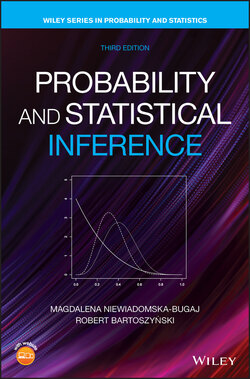Читать книгу Probability and Statistical Inference - Robert Bartoszynski - Страница 77
Solution
ОглавлениеHere we make the following assumption: (1) all years have 365 days (i.e., leap years are disregarded), (2) each day is equally likely to be a birthday of a person (i.e., births occur uniformly throughout the year), and (3) no twins attend the party. To compute , we must find the number of all possible ways in which birthdays can be allocated to people, and the number of such allocations in which birthdays do not repeat. The first number is (by Theorem 3.2.3), while the second number is (assuming ; if , we must have at least one birthday repeating, so ). Thus, for , we have
As a first approximation, neglecting all products which have denominators of order or higher, we can take
(3.6)
This approximation works quite well for small . Now since , we have
(3.7)
It is interesting that for a repeated birthday is about as likely as no repetition. The smallest for which is less than 0.01 is 56.
